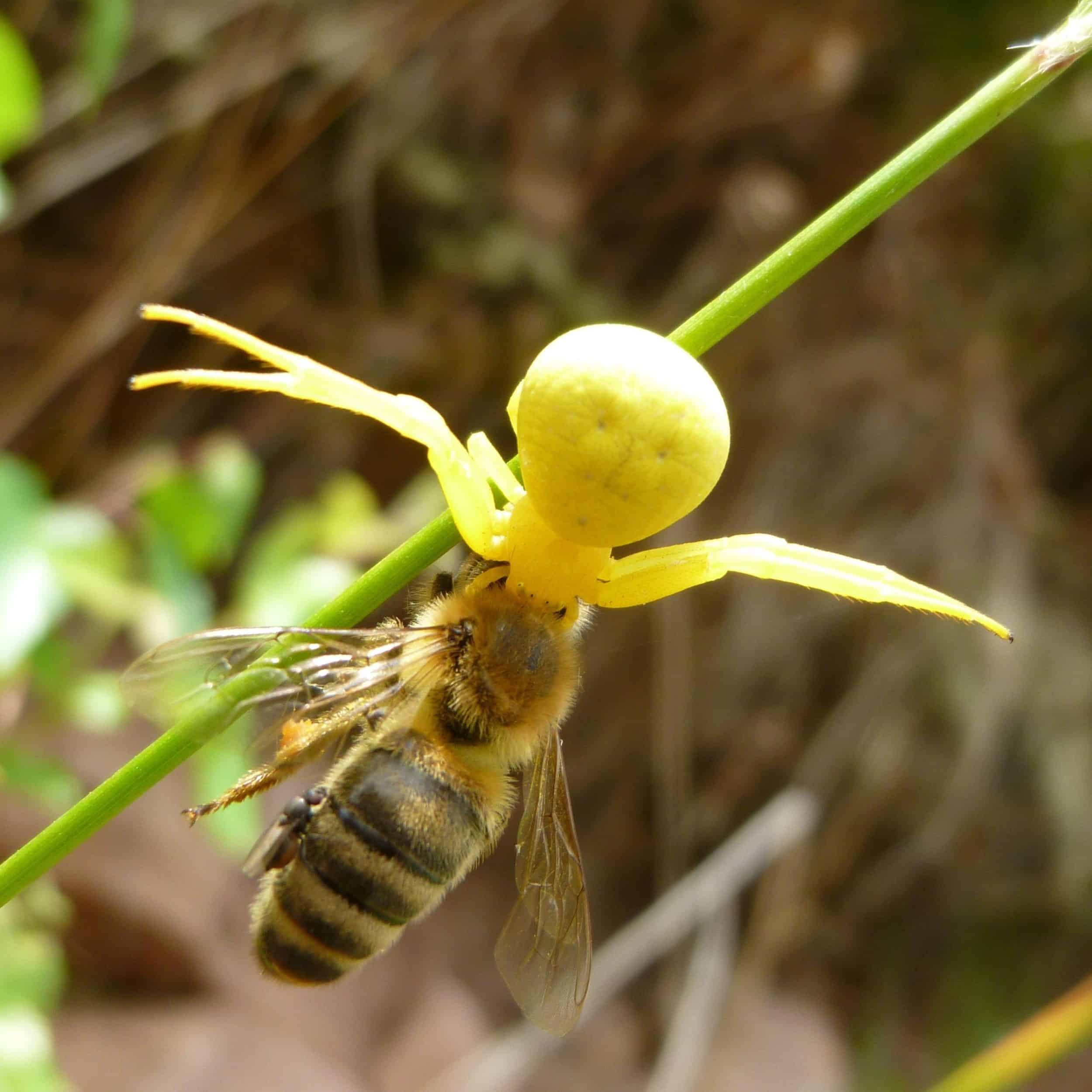Of the many fall flowers that color our world, goldenrods are my favorite. For one thing, they were my mother’s favorite flower. For another, they feed a multitude of insects, spiders, and other creatures at an important time of year when cold-blooded animals prepare for winter.
To stand in front of a patch of goldenrod is to witness a parade of pollinators, from bees, wasps, flies, bugs, beetles, ants, butterflies, and skippers. Beyond these is an equally diverse assemblage of predators, like assassin bugs, ambush bugs, praying mantids, crab spiders, wasps, and the occasional Green Anole. On a nice day, the number of species observed can overwhelm.
What all these creatures are doing is getting ready for winter, when many will die, leaving their young behind, or hibernate until spring. In either case, their need for sustenance is vital. And although pollen is the main attraction for many, pollinators are also on the menu. A closer look at the activity of visitors to these flowers tells their tale.
For many pollinators, pollen is the main prize, feeding themselves and their young. Honeybees and bumble bees feed pollen to their young and themselves, many overwintering or emerging in spring. The pollen sacs on their hind legs give away their motivation.
Other winged visitors sustain themselves as they go about their business of capturing other sources of food, many also found on the very flowers they visit. Many wasps, for example, hunt caterpillars, spiders, crickets, and other insects that they place in their nests for their young to devour. They actively hunt among the blossoms looking for their prey.
And then there are the patient predators, like ambush bugs and crab spiders that sit perfectly still on a blossom, blending in with their shapes and colors, waiting for a pollinator to come within reach. I often find these camouflaged critters by looking for an insect that is not moving – having been caught – just hanging there while the captor sucks its juices.

As for Green Anoles, these critters are far from subtle, often found by observing a sudden bending of a stem, as they snatch whatever they can grab. And if you stand still, a small bird may come by, also making its way among the stems, looking for a morsel. This is particularly true for the fall warblers that happen when goldenrods and other fall flowers are in bloom.
Should you choose to witness one of the more spectacular annual events of the insect world, visit a patch of my Mama’s favorite flowers? The diversity of critters that you will see will overwhelm. The many shapes and sizes of wasps and bees are inspiring enough, but the multitude of other types of insects will also impress anyone. But don’t forget to look for those sit-and-wait predators, calmly eating their prizes. Yes, other fall flowers have a similar show, but none quite as spectacular as goldenrods.
Hope to see you in our great outdoors!